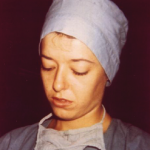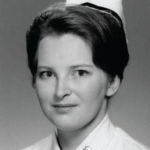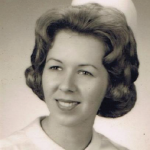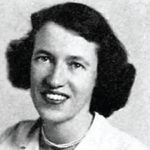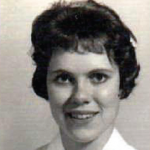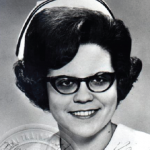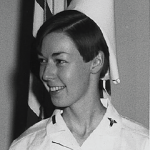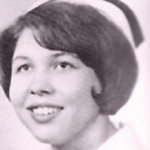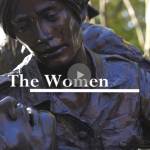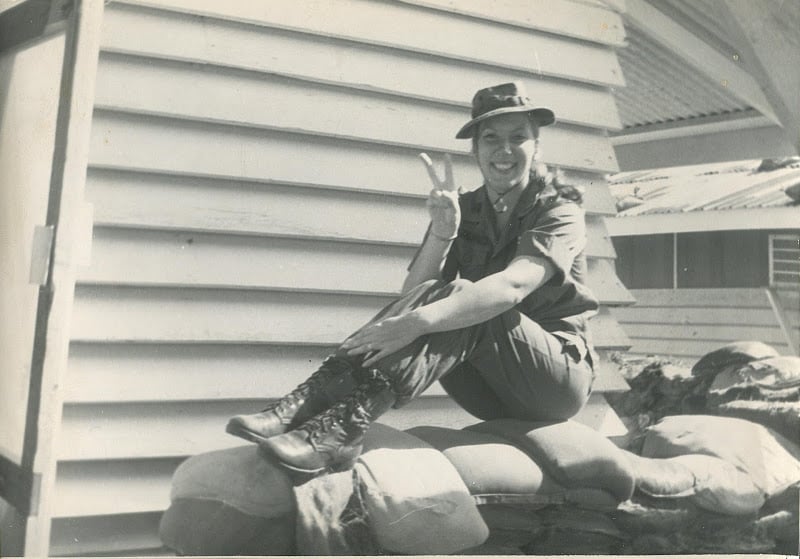
Lt. Col. Janis Nark, USA (Ret.) enlisted in the Army Nurse Corps while in nursing school and shipped off to boot camp in the spring of 1970. Her first duty station was at Madigan General Hospital in Washington state. Her ward was a medical one, all Vietnam Vets with overlapping diseases and toxic exposures. “All 18 or 19 years old; they weren’t just sick; they were dying.” Fortunately, after a short time there she was transferred to Orthopedics. Busloads of air evacs from Vietnam arrived daily with gunshot wounds, frag wounds and amputations, many were multiple amputees. The nurses would check each out while they were still on the litters, often their patients last memory was of being wounded . She said they would always look to our eyes. It was our eyes and our touch as much as our voice that told them “You’re with us now. You’re home. It’s going to be OK.” Many of the injured called them angels. With only six months of nursing experience, the 2LT was sent to Vietnam at the age of 21.
She served one year in Vietnam from 1970 to 1971, where she was stationed at Cam Ranh Bay. Nark, like her fellow nurses, went to her job and faced the perils of enemy fire, horrific heat and humidity, insects, monsoons, long work hours and sleepless nights. She took care of the sick, the wounded and those that would die.
After returning home, Nark believed that there was no one with whom she could share the experiences of that year. She decided to just get on with her life and “not think about it.” Living an active life of working as a civilian nurse and teaching skiing in the winter and then for the Army Reserves in the “off season” she felt her life was full and exciting.
She stayed in the Army Reserves for 20 years, serving on active duty for Operation Desert Storm from 1990 to 1991. It was then that PTSD “came crashing down on my head.” She learned the hard way that not thinking about war traumas and not crying about anything for 20 years takes a toll. She began writing down her memories, and finally, she started to cry. Eventually she began to talk to other Vietnam Vet nurses and then to speak publicly about her war. “It’s a process” she says, “and the only way out, is through.”
Her time in the Army Reserves was spent mostly in education and training, including 20 summers teaching AMEDD Reserve Officers at The Academy of Health Sciences at Ft. Sam Houston, TX.
Nark is a graduate of the Army’s Command and General Staff College and retired from the military in 1995 as a Lieutenant Colonel, with 26 years of service behind her. She is a highly sought after motivational speaker and a prolific writer, having been published in over a dozen books including four editions of Chicken Soup for the Soul.
When asked how she thought women’s service in Vietnam impacted or inspired women serving today, she said, “We all stand on the shoulders of those who went before us. Lessons learned should be lessons taught and remembered.”
Today, she serves on many boards of organizations helping veterans, speaking to Veterans Groups across the country and volunteering through her Elks Lodge in Aspen, CO every winter for the Disabled Americans Veterans Winter Sports Clinic held there.
Colonel Nark has served on the Board of Directors for the Vietnam Veterans Memorial Fund (VVMF) for over twenty years. She is a Lifetime Member of multiple service organizations including the Disabled American Veterans.
Eight women, all nurses, are among the more than 58,000 names on the Vietnam Veterans Memorial. Most were killed in airplane or helicopter crashes. Sharon Lane was the only one killed by enemy fire.
Download a brochure about the women on The Wall
Captain Eleanor Grace Alexander, U.S. Army had been working in a hospital in Pleiku to help out during mass casualties from Dak To when her plane crashed on the return trip to Qui Nhon on November 30, 1967. She was with the 85th Evacuation Hospital. She was from New Jersey and is remembered on Panel 31E Line 8.
2nd Lieutenant Pamela Dorothy Donovan, U.S. Army died of pneumonia on July 8, 1968. Born in Ireland, she was assigned to the 85th Evacuation Hospital in Qui Nhon. 2LT Donovan is remembered on Panel 53W, Line 43.
2nd Lieutenant Carol Ann Elizabeth Drazba, U.S. Army was killed in a helicopter crash near Saigon on February 18, 1966. Born and raised in Pennsylvania, she is remembered on Panel 5E, Line 46.
Lieutenant Colonel Annie Ruth Graham, U.S. Army suffered a stroke on August 14, 1968. She was from North Carolina and was the Chief Nurse with the 91st Evacuation Hospital in Tuy Hoa. Her name can be found on Panel 48W, Line 12.
2nd Lieutenant Elizabeth Ann Jones, U.S. Army was flying with 2LT Drazba and was killed in the same helicopter crash near Saigon. She was assigned to the 3rd Field Hospital. 2LT Jones was from South Carolina and is remembered on Panel 5E Line 47.
Captain Mary Therese Klinker, U.S. Air Force was part of an on-board medical team during Operation Babylift. Her flight was carrying 243 infants and children when it developed pressure problems and crashed while attempting to return to the airport. Captain Klinker was killed on April 4, 1975, just three weeks before the Fall of Saigon. A native of Indiana, she is remembered on Panel 1W, Line 122.
1st Lieutenant Sharon Ann Lane, U.S. Army was killed by a rocket explosion on June 8, 1969, less than 10 weeks after she arrived in Vietnam. Assigned to the 312th Evacuation Hospital, 1LT Lane was working in the Vietnamese ward of the hospital when the rocket exploded, killing her and her patients. She was from Ohio and her name can be found on Panel 23W, Line 112.
1st Lieutenant Hedwig Diane Orlowski, U.S. Army was onboard with Capt. Alexander when their plane crashed on its return trip to Qui Nhon. She was assigned to the 67th Evacuation Hospital, 1LT Orlowski was from Michigan. She is remembered on Panel 31E, Line 15.
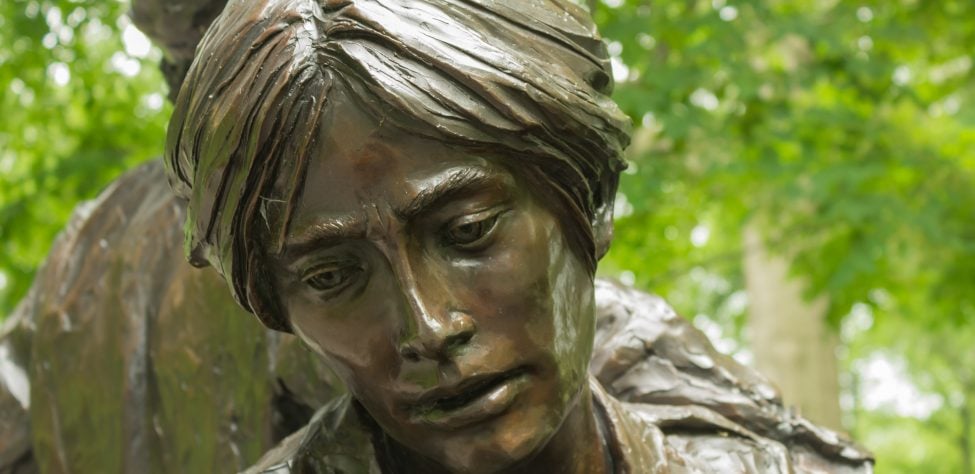

There are eight women, all nurses, whose names appear on The Wall. Of the 265,000 women who served during Vietnam, nearly 10,000 military women served in-country during the conflict. Barred from combat, these women served in health care, communications, intelligence, and administrative positions. Civilian women served as foreign correspondents for news agencies, worked for organizations such as the American Red Cross and the USO, or served in other government agencies, such as USAID or at the embassy.
In late 1983, Diane Carlson Evans, a nurse who served in the Army in Vietnam, conceived of the idea to add a statue to the Vietnam Veterans Memorial site to honor the women who served. She incorporated the Vietnam Women’s Memorial Project (VWMP) in 1984. In 2002, the group changed its name to the Vietnam Women’s Memorial Foundation (VWMF).
The memorial was established not only to honor those women who served, but also for the families who lost loved ones in the war, so they would know about the women who provided comfort, care, and a human touch for those who were suffering and dying.
The 2,000 pound, 6-foot 8-inch sculpture portrays three women, one of whom is caring for a wounded male soldier. In the surrounding site, eight yellowwood trees were planted to symbolize the eight women whose names are on The Wall. The Vietnam Women’s Memorial was dedicated on November 11, 1993.
Civilian women also volunteered and served as foreign news correspondents, worked for organizations such as the American Red Cross, Army Special Services, United Service Organizations (USO), Peace Corps, and various religious groups such as Catholic Relief Services, or served in other government agencies.
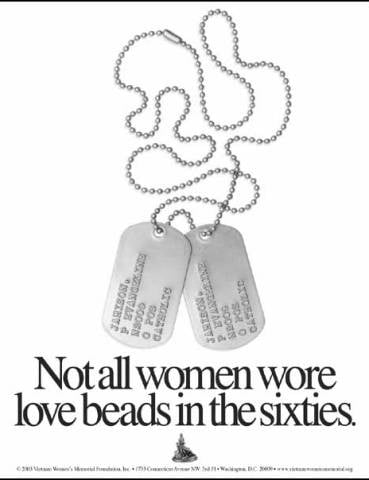

In April of 1956 three women arrive in Saigon to teach South Vietnamese nurses medical procedures and techniques. This was the start of American nursing during the Vietnam War. In Vietnam nurses could be male or female, however the majority were women with the average age being 23. Tours lasted twelve months, but differences hospital size and locations made each experience unique. These young women were tasked with performing medical procedures in a radically different environment than their predecessors had in World War II. Helicopters meant that service members who would have previously died on the long haul from the battlefield could now get a medevac and be seen within minutes. The swiftness of this care meant a higher rate of survival, but also saw nurses dealing with more intense traumas. Working long shifts in sweltering and dangerous conditions nurses ensured that service members, some in their final hours, found healing and care. More than 5,000 nurses served in America’s longest war and 8 gave their lives. Their names are engraved upon the Vietnam Veterans Memorial.
As many as 11,000 women served in Vietnam during the war and close to 90% were nurses. A few of these nurses recount their most vivid memories caring for the horribly wounded. They also discuss how they helped their patients die with dignity.
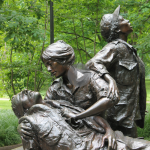 The names of eight women are inscribed on The Wall, but the Vietnam Women’s Memorial and honors the women. The 2,000 pound, 6-foot 8-inch sculpture portrays three women and remembers all who served in a variety of capacities. Hear why it’s so meaningful to so many women.
The names of eight women are inscribed on The Wall, but the Vietnam Women’s Memorial and honors the women. The 2,000 pound, 6-foot 8-inch sculpture portrays three women and remembers all who served in a variety of capacities. Hear why it’s so meaningful to so many women.
Blogs
Angels of War: A Vietnam Nurse
Stories
“My Cousin Jean” Written by Lt. Col. Janis Nark, USAR (Ret.)
Interviews
Veterans History Project: Janis Alyce Nark: Library of Congress


